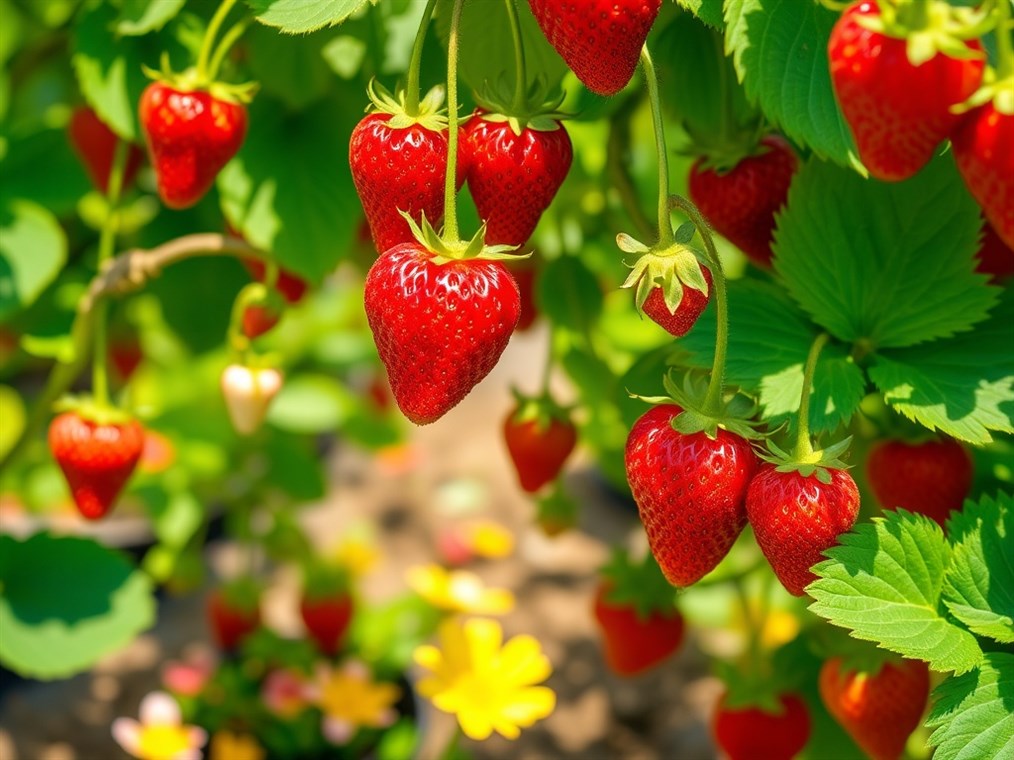Chandler Strawberries: How to Grow ‘Em Like a Pro (Even if You’re a Beginner)
Okay, so you want to grow Chandler strawberries? Excellent choice! These berries are seriously delicious – big, juicy, and packed with that classic strawberry sweetness. I’ve been growing them for years, and let me tell you, there’s nothing quite like biting into a Chandler you’ve grown yourself. They’re a popular June-bearing type, which means you get one big harvest, usually right around the start of summer. Ready to get your hands dirty? Let’s dive in.
First things first, let’s talk about what these babies need to thrive. Think of it like setting up the perfect vacation spot for your strawberry plants.
Sunlight is key – and I mean lots of it. Aim for at least 6-8 hours of direct sun every day. Seriously, don’t skimp on the sunshine; it’s what makes those berries sweet! Now, if you live somewhere with scorching summers, a little afternoon shade can be a lifesaver. Think of it as giving them a little siesta.
Next up: soil. This is where things get a little Goldilocks-ish. You don’t want soil that’s too soggy, but you also don’t want it bone dry. Well-draining soil is the name of the game to prevent root rot. A slightly acidic pH is ideal, somewhere between 5.5 and 6.5. I always mix in plenty of compost or other organic matter. It’s like giving your plants a superfood boost!
Water is another crucial element. Consistent moisture is vital, especially when those flowers start blooming and those little green berries start forming. About an inch of water a week is a good rule of thumb, but keep an eye on the weather and adjust accordingly. Drip irrigation is your best friend here – it keeps the leaves dry, which helps prevent fungal diseases. Nobody wants that!
Chandler strawberries are pretty adaptable when it comes to temperature. They’re happy in USDA zones 5-8, which covers a lot of the country. They like it mild to warm, and they can handle a bit of cold. A light frost is usually no big deal, but once those blossoms appear, you’ll want to protect them.
Originally from California, Chandler strawberries perform exceptionally well in coastal states and the South. They are a favorite for winter production in Southern California.
Alright, let’s get these plants in the ground!
Timing is important. You can plant in early spring or fall. I like planting in the fall because it gives the plants a head start for the following spring. When planting in rows, give each plant about 18-24 inches of elbow room, and leave 3-5 feet between rows. This gives them plenty of space to spread out and do their thing.
Make sure you plant them at the right depth, too. The crown – that’s where the roots meet the stem – should be level with the soil. Plant it too deep, and it’ll rot. Not deep enough, and it’ll dry out.
There are several ways to grow Chandler strawberries. They do great in traditional rows, but they’re also fantastic in containers, raised beds, or even hanging baskets. Get creative!
Now, let’s talk about feeding your strawberry plants. These guys are hungry!
Before you even put the plants in the ground, mix a little fertilizer into the soil. Something with a ratio of 1-2-1 or 1-3-1 works well. Then, give them another dose of fertilizer in early summer and again in late summer. Just be sure to avoid fertilizing when they’re flowering.
I’ve also found that foliar feeding can work wonders. This involves spraying the leaves with a solution of nutrients. It’s like giving them a vitamin boost!
Don’t forget about organic amendments, either. Compost, aged manure, even coffee grounds and crushed eggshells can all help nourish your plants.
Once your plants are in the ground, there are a few things you’ll need to do to keep them happy and healthy.
Water them regularly, especially when those berries start to form. Mulch is your friend! A layer of straw or pine needles helps retain moisture, suppress weeds, and keep those berries clean.
Keep an eye out for runners – those little offshoots that the plants send out. If you want bigger berries, snip off the runners. It’s like telling the plant to focus its energy on the fruit.
Pests and diseases can be a problem, too. Keep an eye out for leaf spot, slugs, and other common strawberry pests. Good air circulation and proper watering can help prevent a lot of problems.
In colder climates, you’ll need to protect your plants over the winter. A layer of straw or leaves will do the trick.
Finally, the moment you’ve been waiting for: harvest time!
Chandler strawberries are usually ready to pick in early summer. The berries should be a deep red color and firm to the touch. Pick them gently, and enjoy them fresh!
A single Chandler strawberry plant can produce a pint to a quart of fruit per season. Not bad, right?
These berries are fantastic for fresh eating, freezing, and even making jam.
Growing Chandler strawberries can be a little work, but it’s so worth it. There’s nothing quite like the taste of a homegrown strawberry, and these berries are some of the best. So get out there, get your hands dirty, and enjoy the fruits (literally!) of your labor. Happy growing!

